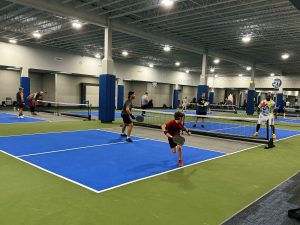Are you ready to think about 2021? I think we all are, especially if it means doing away with the unprecedented issues that have become commonplace in 2020. The Coronavirus has driven far-reaching effects in nearly all facets of life and business. Not the least of which is the development of new sports facilities. While this year started with a wave of optimism from a project planning standpoint, efforts to slow the spread of the virus and the impact that’s had on the economy has slowed many projects to a (temporary) grinding halt.
However, the news is not all bad. Here at the Sports Facilities Companies, we are seeing a slow return to optimism in terms of venue development. This is in part because of the recognition of the power of sports tourism to drive economic outcomes as well the importance of recreation to promote healthy communities. Generally speaking, there’s a pent-up demand for these facilities, which is starting to be met as projects are resuming or being launched.
Additionally, several trends that were emerging prior to and during the pandemic are starting to take shape. Below are five specific examples that we are seeing throughout the United States and beyond. May this list serve as inspiration as you pursue a sports tourism or community recreation project.
What’s driving these trends?
Beneath the surface are a number of factors that drive these trends, including:
Shifts in how retail and residential developments are structured: In recent years, there’s been a big push to develop structures that meet complimentary purposes. Urban corridors in many large and midsize cities feature “live-work-play” developments as part of living options for their citizens. With these communities comes the expectation that essential needs and desired entertainment should be located close to our homes. Meeting this expectation has become the focus for a number of sports venue development projects throughout the United States.
A Low Fed Funds Rates: The interest rate that banks can lend to each other is currently .25 compared to 2.25 a year ago. The lower interest rate is a maneuver aimed at encouraging investing and lending and can the spark the growth of facility development projects.
The Coronavirus’ impact on tourism: Dramatic reductions in the hotel nights sold and hotel taxes collected will have drastic effects on municipal budgets in the coming year.
Sports Facility Development Trends
The union of sports and wellness: There’s a natural alignment that sports or recreation facilities and health and wellness companies have that not only feels natural but is just being tapped. Sports facility developers are experiencing a number of benefits from working with medical partners. This includes having support from a highly visible community champion, receiving development capital, receiving revenue in the form of long-term leases and naming rights, and receiving in-kind benefits, including the availability of trainers and wellness programming for participating athletes.
Medical partners receive a number of benefits from collaborating with sports facilities as well, including having a partner that can spawn strategic growth (especially true for midsize brands looking to expand their regional presence), revenue from traffic driven from the venue, and overall community visibility. The last benefit is particularly important during the pandemic as some medical partners have served as hubs for essential services, pop-up hospitals, and distribution centers for first responders.
Repurposing of community assets: Many communities have assets that are underperforming or are no longer being used. For example, golf courses on average cost between $500,000 and $1 million per year to maintain (according to Bob Randquist, chief operating officer of the Golf Course Superintendent’s Association of America in an article for Golf Magazine). These are pricey numbers not often met by cities maintaining municipal golf courses. Avid golfers often choose better maintained private courses and the public course suffers. These courses are starting to see new life as cities are developing ways to transition these greenspaces to more transformative uses including large multi-use parks. The idea is to take what was becoming an expense for a municipality and convert it to an economic driver and place maker for a community.
Facilities with multi-sport adaptability: More and more facilities are being developed to accommodate both sports tourism and community use. This is not an entirely new concept, but what is newer is how these accommodations are woven into the design of the facility. For example, the Champion Center in the Fox Cities region of Wisconsin aimed to provide enough rink space to host tournaments in the local area while being mindful of the presence of smaller rinks. With this goal in mind, the Champion Center was designed with three pods. One of which can convert from court space to an ice rink during hockey and figure skating season. This design minimizes the yearly cost to maintain the ice and provides enough court and ice space to host regional tournaments during its respective seasons.
Large Mixed-use development: We are starting to see sports complexes become anchor tenants in large mixed-use development projects. The primary factor driving this trend is the operational costs and debt obligations of a sports complex versus its economic impact. Alone, some sports complexes have difficulty meeting their goals, however, when adding other amenities including a hotel, retail shops, restaurants, and/or wellness centers, a multilayered investment strategy is created that increases the likelihood for desired outcomes. In these cases, the venue is not only supported by multiple investors, but itself becomes a revenue driver for surrounding businesses.
Multi-functional event centers: Recognizing the need for sports venues to serve their surrounding communities in a more comprehensive way, these assets are being developed for a variety of uses. In North Carolina, Rocky Mount Event Center is part of a wave of versatile facilities that can be converted for a variety of uses. While it primarily serves as a basketball and volleyball tournament venue, the event space can be converted to host concerts, events, and trade shows. It can also serve a variety of disaster relief purposes, including as a shelter or food bank during hurricane season.
We hope that these trends provide a sense of optimism about the future of sports, recreation, and event facilities. And if it motivates you to pursue your vision, contact us today at 727-474-3845.






